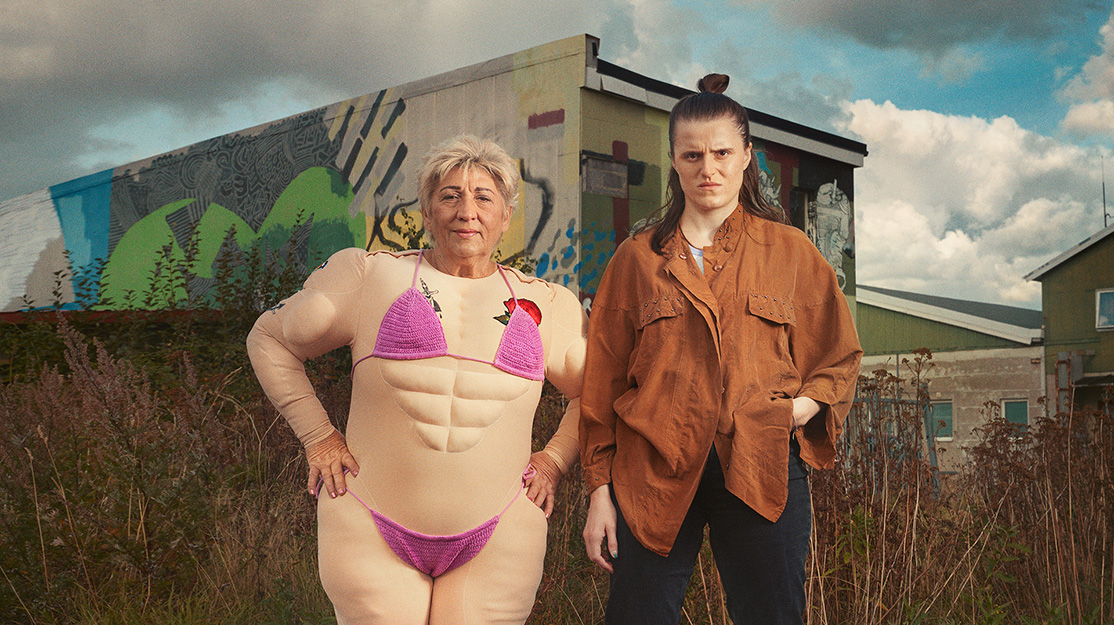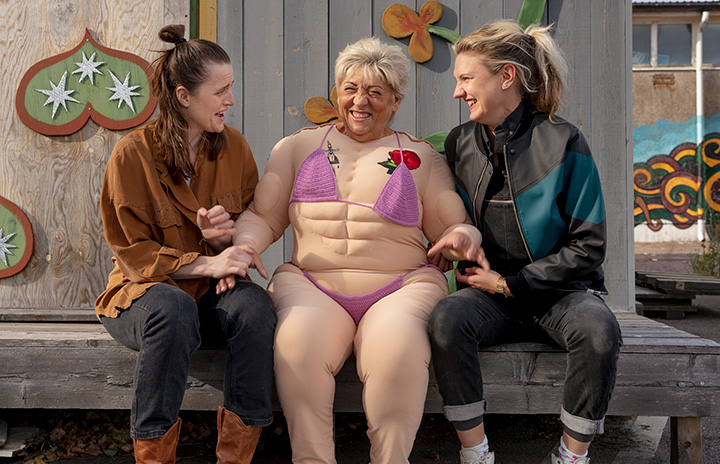
Taking the pain
Swedish writer and director Gabriela Pichler reflects on moving into television for the first time with Painkiller, which tells the story of a unique mother-and-daughter relationship, and her personal connection to the series.
Dijana and her daughter Andrea, the protagonists in Swedish drama Painkiller, have a lot to answer for. Not only are they central to the latest project from award-winning writer and director Gabriela Pichler, but they are also responsible for Pichler’s first move into television.
“We had no choice. Some characters refuse to be talked about in only a feature film format. They demand an entire TV series about themselves,” she says. “They forcefully elbow their way into the script and demand six episodes. And they are convinced that the audience will love them.”

Painkiller, a six-part series for SVT, introduces Dijana, a proud Balkan mother who has exhausted her body with cleaning and factory work. Meanwhile, her daughter Andrea is a successful artist, but still living at home. When Andrea manages to get her mother to start treatment for her chronic pain, the course is unexpectedly cancelled, leading Andrea to decide to treat Dijana herself. Suddenly, Dijana is the involuntary subject of her daughter’s new art project.
Starring Snežana Spasenoska (Dijana) and Dodona Imeri (Andrea), the series is co-written and directed by Pichler, produced by Anna-Maria Kantarius for Garagefilm and distributed by Reinvent International Sales. Filming took place in Gothenburg and Skåne between October and November last year, with the series now airing on SVT and SVT Play.
Here Pichler tells DQ about bringing Painkiller to television, her partnership with co-writer Johan Lundborg and her personal connection to a story that confronts healthcare and class with humour.
You have had a hugely successful film career. Why was now the right time to move into television?
Working with the half-hour format in six episodes felt incredibly liberating. I was curious about another kind of storytelling, playfulness and different dramatic structures that you sometimes struggle with in feature-length. With SVT, I could also reach a broader kind of audience.

What are the origins of Painkiller?
My mum has fibromyalgia, a chronic pain syndrome, and went untreated for two decades. The situation reached its lowest point when I tried to enrol her in a pain programme at a local hospital. They promised a lot, but the programme was abruptly shut down before the patients could even see the pain specialist, because of a lack of resources. We gave up. We had tried everything up to this point.
But in my various productions, I’ve often featured my mum on camera. Those moments served as brief respites for her, sometimes offering a distraction from the pain (if we were lucky). We incorporated this idea of using creativity and imagination as a distraction into the script.
What were the themes or topics you wanted to discuss through the story?
The series revolves around an unfair and crumbling Swedish healthcare system, and the cultural in-betweenness and social class differences of a working-class mother and an artist daughter. It is told with a lot of humour and with two unconventional female protagonists.
The theme of gentrification in Gothenburg also forms the backdrop for Painkiller, noting the tendency to build and plan away socially vulnerable groups, and those without economic capital.

What is the background to your partnership with Johan, and why did you decide to write the scripts together?
Johan Lundborg is my partner-in-crime in both work and life. He was the director of photography and co-editor both on Äta sova dö [Eat Sleep Die] and Amateurs, my previous films. We went to the same school of film directing in Gothenburg and have worked together since then. He actually started to write on this idea and convinced me that now is the opportunity to tell this story.
Throughout scriptwriting, casting, pre-production, shooting and post-production, it is both practical and fun to be the script writers at the same time as DOP, director and co-editors. We quickly sense what works in relation to our story, we can treat the script as a living material and we can adapt the script to different practical circumstances when they occur, as they always do.
What challenges did you face, in writing or directing the series?
It was a challenging project due to the intense shooting schedule compared with my feature films. Many of those in front of the camera were acting for the first time in their lives, like Snežana, one of the main actors, who plays the mother, Dijana. That always requires immense preparation, more time and patience.
What lessons have you learned after working in television for the first time?
That long working relationships and having a fantastic film crew and actors around you means everything, especially when you work in a new kind of fast-paced industry like the TV industry.
For many of us involved in this project, the themes are quite personal and we can identify with the story, and we share many similar experiences. I worked with my producer, Anna-Maria Kantarius, these last 10 years – she is also my and Johan’s creative partner – and she’s with us every step of the way, inspiring us with creative ideas and solutions. She is one of a kind – empathetic, clever and has great sense of humour. Working the way we do requires a brave producer who dares to take risks. I admire that in her.
tagged in: Anna-Maria Kantarius, Dodona Imeri, Gabriela Pichler, Garagefilm, Johan Lundborg, Painkiller, Reinvent International Sales, Snežana Spasenoska, SVT



